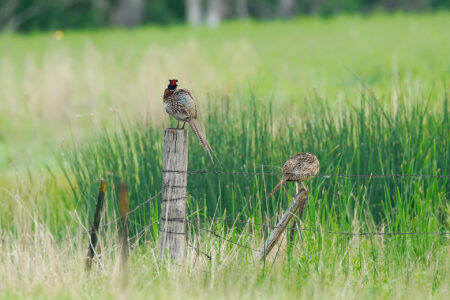NORTH DAKOTA OUTDOORS: Hunters’ understanding of harvest information program important

Submitted Photo Survey information is important for biologists. Photo from NDGF.
I’ve become numb to email, phone and text surveys or post-purchase questionnaires. From a service call or store receipt, and everything in between, companies and businesses are constantly asking patrons about their activity and assessing their expectations.
Thankfully, the majority of these are voluntary and I just hang up, disregard, or click through. I figure if it was that important, I’d have to answer.
So, when it comes to hunting and fishing surveys when they are law or mandatory, hunters should understand how important the information requested is.
In North Dakota and across the nation, the Harvest Information Program number is not voluntary. It is both important and mandatory.
Migratory Bird Harvest Information Program
The Migratory Bird Harvest Information Program is a U.S. Fish and Wildlife Service program designed to measure the harvest of migratory birds for management purposes. All migratory game bird hunters must register annually in each state they hunt before hunting ducks, geese, swans, mergansers, coots, cranes, snipe, doves and woodcock. You can register online. After answering a brief survey, you will receive a HIP registration number, which must be recorded on your fishing, hunting and furbearer certificate.
If you purchase your hunting license at the Department’s Bismarck office, through the Department’s website, or over the phone with the toll-free number, you can easily get HIP registered. If you participated in the spring snow goose conservation hunt you should have already been HIP registered.
While this is done through your North Dakota licensing, it is a nationwide requirement.
Why harvest information is necessary
The U.S. Fish and Wildlife Service monitors migratory game bird harvest in the United States. The Branch of Monitoring and Data Management within the Migratory Bird Program uses HIP to select hunters for the Migratory Bird Hunter/Harvest Survey and the Parts Collection Survey. All hunters are asked to complete HIP, but a smaller sample of hunters are sent the Diary Survey and Parts Collection Survey. The smaller sample is based on HIP responses.
For more information on HIP see the U.S. Fish and Wildlife Service’s HIP page.
The survey program has three steps:
Step 1- Harvest Information Program
All migratory bird hunters are required to fill out HIP when they register for their hunting license. These registration questions include name, address and hunting activity from the past season.
Step 2- Migratory Bird Hunter Survey
Some hunters are selected for the Diary Survey, a hunting diary form. This form asks for the date, county and number of birds taken for every hunt. There are five separate surveys for five species or species groups: 1) doves and band-tailed pigeons, 2) waterfowl (ducks, sea ducks, geese, and brant), 3) American woodcock, 4) rails, gallinules, coots, snipe and 5) sandhill cranes. These surveys are important because they give harvest estimates for these species/species groups.
Step 3- Parts Collection Survey (Wing Survey)
To collect information about harvest by species, age and sex, there are Wing Surveys.
Some successful hunters are selected from the Diary Survey and asked if they are willing to send parts from the birds that they harvested. Hunters send a wing from each bird they shoot (or tail feather from each goose).
There are three independent wing surveys: (1) waterfowl, (2) mourning dove and (3) woodcock, rail and band-tailed pigeon.
Biologists at “wingbees” examine wings to determine the birds’ species, age and sex. Woodcock wings can help determine their age and sex ratios. Mourning dove and band-tailed pigeon wings can help determine their age ratios.
The Diary and Wing Surveys help estimate how many ducks of different species, ages and sex were harvested during a hunting season. The surveys also allow estimates of species and age-specific harvest for geese. Age ratios are used to calculate reproduction rates. Reproduction plays an important role in keeping migratory bird populations stable.
Hunter information is critical to our understanding of migratory bird populations. Annual participation in HIP and the Diary and Wing surveys contributes to wildlife conservation and management.


